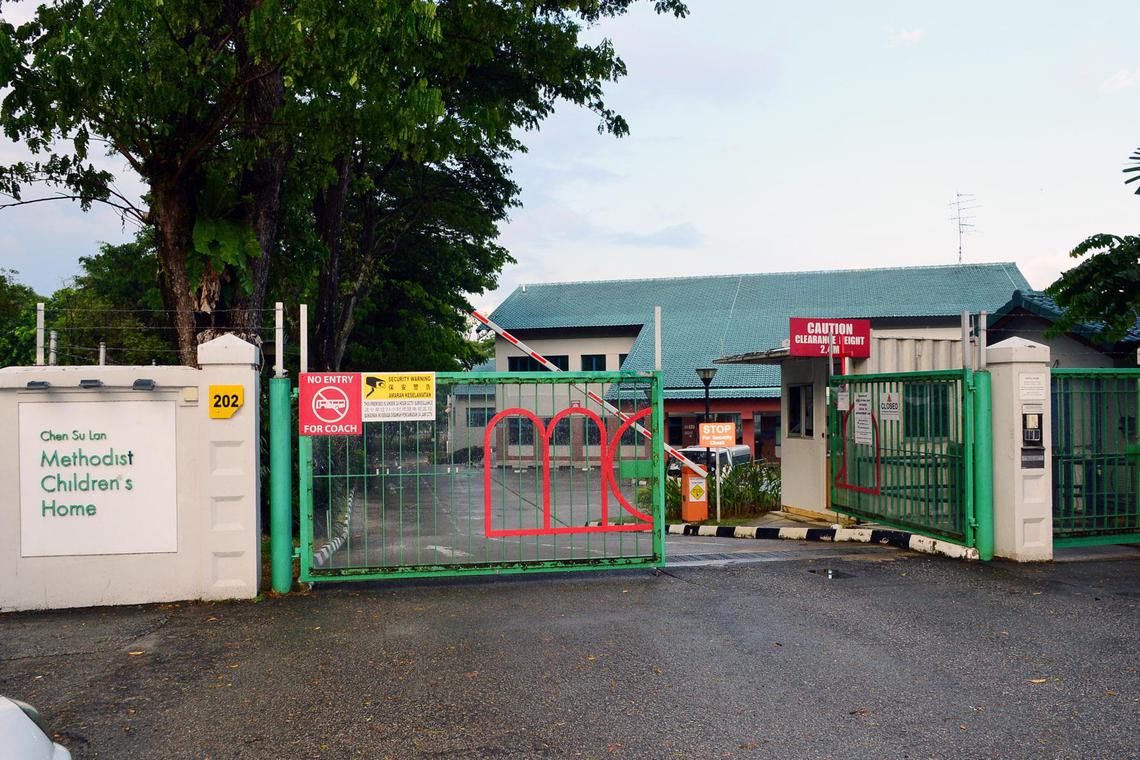‘It was scary living on my own’: How children’s homes support youth with nowhere to turn to
Sign up now: Get ST's newsletters delivered to your inbox

Children’s homes have in recent years been helping to ease the transition of youth to independent living as they grow older.
PHOTO: LIANHE ZAOBAO
Follow topic:
SINGAPORE – Children’s homes have in recent years been helping to ease the transition of youth to independent living as they grow older.
At least three homes have programmes to support these youth in areas like finding housing and jobs, and imparting life skills as they approach their late teens and move into adulthood.
Nearly 600 children and young people live in residential and youth homes in Singapore.
In January, Chen Su Lan Methodist Children’s Home started The Hearts Programme for those aged 13 and above, to prepare them for the time when they will move out.
Currently, there are 10 young people in this programme who receive personalised transition plans, life skills training and housing assistance. Social workers will follow up with them for up to two years, along with volunteers who provide informal support.
Volunteer mentors from community groups and churches also guide the youth through job options and provide housing assistance.
In July, the Ministry of Social and Family Development (MSF) announced a scheme to grant more support, including financial assistance, to young people aged 17 to 21, for whom reunification with their family is not possible. Leaving the care system at the age of 21 often means finding a new place to live, and while reunification with family is the ideal outcome, it is not always possible, it said.
Some young people are unable to be reunited with their families for reasons such as the death or incarceration of their parents.
About 30 young people will benefit annually from the scheme, which is for those who are enrolled in full-time studies, training, internships or national service. The support continues until they complete their education or secure full-time employment.
For a start, the scheme will be provided by three children’s homes: Chen Su Lan Methodist Children’s Home; Melrose Home, which is run by the Children’s Aid Society; and Singapore Boys’ Hostel. More partners will join the initiative over the next two years.
However, some like 19-year-old Ashley (not her real name), who is studying and working at the same time, may not be eligible for the scheme. Unable to reunite with her family, Ashley tried living on her own for three months. This meant she had to rent her own place, manage her finances and navigate life outside the children’s home she had been in since she was 10.
“It was scary living on my own,” she said. “I was worried about not just my finances and housing, but also feeling lonely.”
During this time, the children’s home she came from found a place in a landed property for her to rent – one bed in a room shared with five others, for $150 a month.
Ashley has a part-time job in a laboratory that tests air quality and takes home about $1,500 a month, which goes towards expenses like food, transport and school fees.
The home is currently subsidising her tuition fees for her part-time diploma in applied science at a polytechnic. She plans to apply for financial assistance for her school fees.
The home is also funding most of the rent for her accommodation, and she worries that getting affordable housing will become more challenging after she officially leaves the home at the age of 21.
For youth who are working full-time at the point of discharge, casework will be provided for a year, said MSF. They will not be eligible for the financial assistance.
In 2022, Melrose Home started Thrive21(+) to help youth aged 17 and above with the challenges that come with moving out. So far, nine residents have benefited.
The programme consists of a year of preparation while the youth are in the home, teaching them skills essential for self-reliance, from financial management to housekeeping, and two years of continued assistance, including in finding a job, after they leave the home.
Ms Soh Ying Si, a social worker from the home, said that a Housing Board flat was rented for the programme’s first batch, who lived together so that it was “less scary for them”. The rental lease will end in June 2025.
The home covers rental fees for them while collecting payment for smaller expenses like utilities and Wi-Fi, Ms Soh added.
And if they could not pay their share for a particular month, Ms Soh said they had to learn to speak up for themselves and explain why they were unable to pay on time.
“They had that fear, that strange feeling of living outside with no one to turn to, at all times,” she said. In the beginning, the youth returned to Melrose Home to eat dinner together almost every day.
The programme is meant to bridge the gap between care and independence, she said, adding that insufficient support can undermine the years of intervention that children’s homes provide.
Another aftercare support initiative, by social service agency Trybe, which manages Singapore Boys’ Hostel, expanded in 2022 to take in youth from other children’s homes, offering them follow-up help and guidance. The Growing Resilient Youth in Transition programme, started in 2015, was originally only for boys from the hostel.
Youth who need help can sign up for the scheme on their own, or other homes can refer them at least three months before they are discharged. A social worker is assigned to follow up with them for 12 to 15 months afterwards, said Ms Helga Foo, a social worker from Trybe.
The social worker will befriend them, mentor them and connect them with community resources, she said.
Challenges after leaving foster care
Social workers said the greatest challenges for these youth include financial security, lack of stable housing and limited support networks.
Ms Cindy Ng, director of Melrose Home, said the youth need to have stable access to resources and opportunities for education, and to be equipped with life skills.
“Without proper support, many of these youth turn to jobs that provide quick access to cash, often in the gig economy,” she said. Some may turn to desperate solutions, like overlooking their studies, or make poor financial decisions in order to meet their immediate needs.
Ms Yeo Bee Lian, director of services and programmes at Trybe, said children’s homes provide youth a safe place of shelter and basic living needs. Moving out of this environment often leads to a “sense of loss”, she said. The sudden lack of structure and guidance, along with new responsibilities, adds to their stress.
The instability also forces some youth into dysfunctional relationships or unsafe living situations, said Melrose Home’s Ms Soh.
She added: “It also often paralyses their ability to continue education, because if they have no place to stay, no money for food, why would they care about studying?”
Securing stable housing and managing mental health are also critical during this transitional period, said Mr Jackson Tan, head of residential services at Chen Su Lan Methodist Children’s Home.
The public can play a part by opening up their homes to let some youth stay with them, he said.
“This way, the youth benefit in two ways – they have somewhere to stay and there is also someone who can take care of them.”
Correction note: In an earlier version of the story, we said that the Thrive21+ programme started in 2021. Children’s Aid Society has since clarified that the programme started in 2022.


